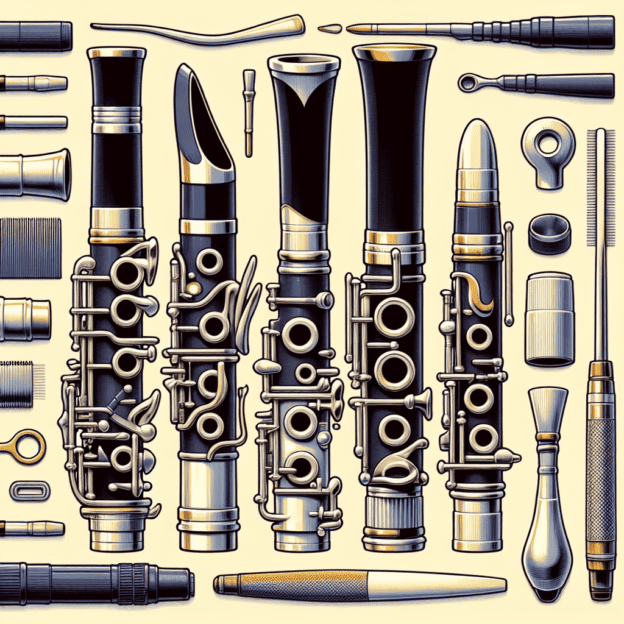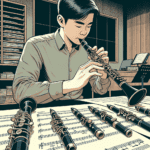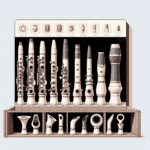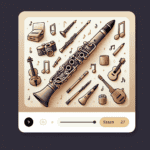For any clarinet player, whether novice or seasoned professional, understanding your instrument is key to achieving the best sound possible. One of the most important components of this understanding lies in the mouthpiece, particularly its facing—the angle and length of the area where the reed contacts the mouthpiece. This aspect significantly influences not only tone and intonation but also how comfortably a player can control their performance.
1. What is a Clarinet Mouthpiece Facing?
A clarinet mouthpiece facing refers to the shape and dimensions of the tip opening and the surface where the reed meets the mouthpiece. This configuration directly affects airflow and resistance, playing a major role in the overall playing experience. Different facings can provide varying levels of resistance, comfort, and sound quality.
| Facing Type | Characteristics | Suitable For |
|---|---|---|
| Short Facing | Less resistance, quick response | Players who prefer bright sound |
| Medium Facing | Balanced resistance and control | Versatile, suitable for various styles |
| Long Facing | More control, requires more air support | Advanced players, fuller tone |
2. Why Facings Matter
Each clarinetist has their own preferences for playing. The mouthpiece facing you choose can significantly change your sound and playability:
- Tone Quality: A larger facing can produce a richer tone, while a smaller facing may focus on clarity and precision.
- Intonation: Adjustments in facing length can help players achieve better pitch accuracy when playing in various musical contexts.
- Air Resistance: Some players prefer a mouthpiece that offers more resistance, which can enhance control, while others may choose a facing that allows for freer airflow.
- Comfort: The right facing will feel more comfortable when playing, allowing for extended practice without fatigue.
3. Types of Mouthpiece Facings
Understanding the different types of mouthpiece facings can help you choose a suitable one for your playing style:
- Short Facings: These have a shorter length from the tip of the mouthpiece to the point where the reed sits. They offer less resistance and are often preferred by players who enjoy a quick response and bright sound.
- Medium Facings: This is a versatile option that balances between ease of play and control. Suitable for various musical styles, medium facings are commonly found on mouthpieces used by both beginners and advanced players.
- Long Facings: Offering more control, these facings require more air support and are generally favored by more advanced players. They can provide a fuller, more resonant tone, allowing for greater expressiveness.
4. How to Choose the Right Facing
Selecting the right mouthpiece facing can be challenging, given the many options available. Here are some tips to help you decide:
- Assess Your Playing Style: Are you a jazz player looking for agility and expressiveness, or are you more into classical music where precision and intonation are key? Your style will guide the facing you choose.
- Experiment: Many clarinetists have a collection of mouthpieces with different facings. Trying various facings can help you find the one that suits your sound and comfort level best.
- Consult with Experts: Ask teachers or professional players for advice. They can offer insights and recommendations based on their experience.
- Consider Your Reed Choices: The type of reeds you use can affect your mouthpiece's performance. Ensure that your mouthpiece facing complements your reed's thickness and style.
5. Maintaining Your Mouthpiece
Proper care of your mouthpiece is vital for preserving its facing and overall functionality:
- Regular Cleaning: Clean your mouthpiece after each use to remove moisture and residues. Use warm water and mild soap—avoid harsh chemicals.
- Inspect for Wear: Check for any chips or wear on the facing. A damaged facing can lead to poor performance, so consider replacement if necessary.
- Store Properly: Use a mouthpiece pouch or case when not in use, protecting it from potential damage during transport.
6. FAQs About Clarinet Mouthpiece Facings
Here are some common questions that new players and professionals often ask:
- Can a mouthpiece make a significant difference in tone? Yes, the right facing can enhance the overall quality of your sound, making a notable difference to listeners.
- How often should I replace my mouthpiece? If you notice a decline in sound quality or if the facing wears down, it may be time to consider a new mouthpiece.
- Do professionals use different facings than beginners? Often, professionals will choose facings that complement their specific playing style, while beginners may start with a more general option until they develop their preferences.
In conclusion, understanding the importance of the clarinet mouthpiece facing is key for any clarinetist who wants to improve their playing. Whether you're looking for a brighter sound or better control, the right facing can make a big difference. Remember to try different options, ask for advice, and above all, enjoy your musical journey!
Table of Contents
- 1. What is a Clarinet Mouthpiece Facing?
- 2. Why Facings Matter
- 3. Types of Mouthpiece Facings
- 4. How to Choose the Right Facing
- 5. Maintaining Your Mouthpiece
- 6. FAQs About Clarinet Mouthpiece Facings








